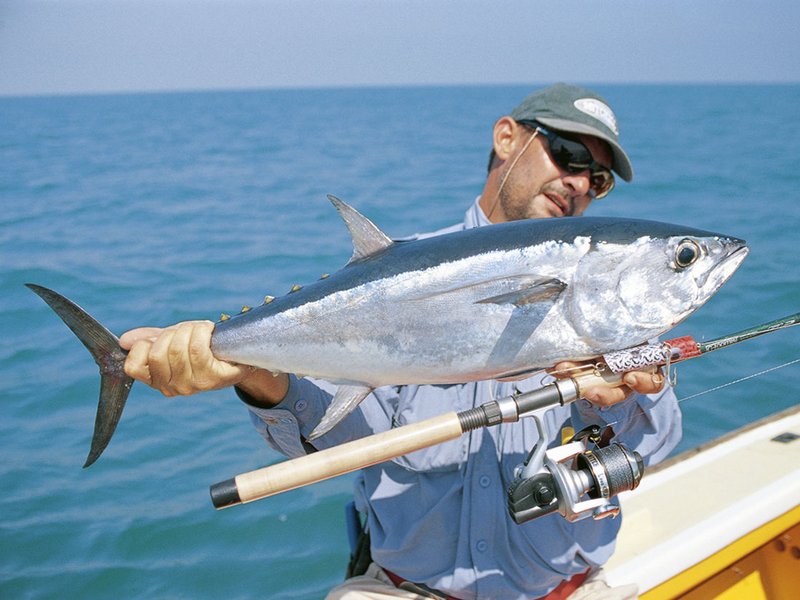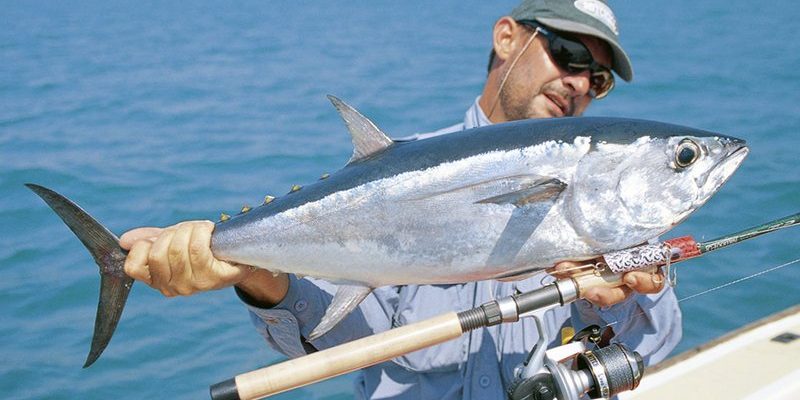
Tuna are some of the most fascinating fish in the ocean. Known for their impressive speed and strength, these sleek swimmers have captured the attention of both fishermen and ocean lovers alike. Imagine racing through the waves with the grace of a ballet dancer but with the power of a speeding train—that’s what it’s like to be a tuna. Whether you’ve enjoyed a delicious sushi roll or simply appreciate the beauty of marine life, understanding tuna can give you insight into the rich world beneath the waves.
These remarkable creatures are not just a culinary delight; they play a crucial role in the ocean ecosystem. You might be wondering, what makes tuna so unique? In this article, we’ll dive deep into the world of tuna, exploring their characteristics, habitats, behaviors, and the challenges they face. With information presented in clear terms, you’ll walk away with a well-rounded picture of these impressive fish.
What is Tuna?
Tuna belong to the family Scombridae, which includes several species such as bluefin, yellowfin, and albacore. They are large, fast, and highly migratory fish that inhabit warm oceans around the world. A defining feature of tuna is their streamlined bodies, designed for speed; they can swim at speeds of up to 75 miles per hour! This agility makes them exceptional hunters, allowing them to pursue smaller fish and squid with ease.
In terms of size, tuna can vary greatly. The smallest species, the skipjack tuna, can weigh around 10 pounds, while the larger bluefin tuna can reach staggering weights of over 1,000 pounds. This vast range in size showcases just how diverse this family of fish really is. Tuna are typically found in deep waters, but they often come closer to the surface when hunting for prey. Their keen eyesight and excellent swimming abilities make them formidable predators in their aquatic environment.
Interesting Tuna Facts
| Species | Bluefin, Yellowfin, Albacore, Skipjack |
| Size | Varies from 10 to 1,500 pounds depending on species |
| Habitat | Tropical and temperate oceans |
| Diet | Small fish, squid, and crustaceans |
| Speed | Up to 75 mph |
| Lifespan | Up to 40 years |
Habitat and Distribution
Tuna are not picky about their homes, as long as the water is warm. They thrive in tropical and subtropical oceans, but some species are also found in temperate areas. Their migratory nature means they can cover vast distances, often traveling thousands of miles in search of food and suitable breeding grounds. In fact, bluefin tuna are known for their incredible long-distance migrations, moving between feeding and spawning grounds in different parts of the ocean.
These fish prefer open waters rather than coastal regions, spending most of their lives in the pelagic zone—this is where the action happens! They like to hang out in deeper waters, but they can also be found near the surface when chasing prey. This versatility allows them to exploit different habitats throughout their lives, ensuring a steady supply of food.
Tuna Diet and Feeding Habits
When it comes to food, tuna are top-notch predators. Their diet mainly consists of smaller fish like herring and mackerel, as well as squid and crustaceans. They have a unique way of hunting that combines both speed and strategy. You might imagine them as the sharks of the fish world, fiercely pursuing their prey while using their powerful tails to dart through the water.
Tuna often hunt in packs, which increases their chances of catching food. They are known to use a technique called “herding,” where they drive schools of fish into tighter groups, making them easier to catch. Tuna have excellent eyesight and can detect even the slightest movement in the water, helping them spot dinner from a distance. This predatory style, combined with their impressive speed, solidifies their place at the top of the food chain in their oceanic environment.
Reproduction and Lifespan
Tuna are fascinating not only for their hunting skills but also for their breeding habits. They reach sexual maturity at different ages, depending on the species. For instance, bluefin tuna can start spawning as early as 3 to 5 years old. Tuna usually spawn in warm waters during specific seasons, triggering mass gatherings where thousands of fish come together to reproduce. This can mean a spectacular scene in the ocean as the waters come alive with activity!
The lifespan of tuna varies by species, with some living up to 40 years. This longevity allows them to grow to impressive sizes and contribute significantly to their ecosystems. However, it’s important to note that the pressures of overfishing have made some species of tuna more vulnerable, impacting their populations and the balance of marine life.
Conservation and Threats
Sadly, tuna face several challenges that threaten their survival. Overfishing is one of the biggest threats, as commercial demand for tuna, especially bluefin, has skyrocketed in recent years. With sushi and sashimi becoming increasingly popular around the world, these magnificent fish are often caught faster than they can reproduce. This poses a significant risk, as it can lead to population decline and affect the entire marine ecosystem.
In addition to overfishing, climate change impacts tuna habitats. As ocean temperatures rise and currents shift, tuna may find their traditional feeding and spawning grounds altered. This can create difficulties not only for tuna but also for other species that share their ecosystem. Conservation efforts are underway to help protect tuna populations through regulations on fishing and the establishment of marine reserves, but it’s a challenging task that requires cooperation from governments and fishing industries worldwide.
Frequently Asked Questions
Why is tuna so popular in cuisine?
Tuna is a culinary favorite for many reasons. Its meaty texture and rich flavor lend themselves well to a variety of dishes, from sushi and sashimi to grilled steaks and salads. Being high in protein and healthy omega-3 fatty acids also adds to its popularity among health-conscious consumers. Whether enjoyed raw or cooked, tuna can be a delicious and nutritious addition to your diet.
Are all tuna species endangered?
Not all tuna species are endangered, but some, like the bluefin tuna, are facing significant population declines. Overfishing, environmental changes, and habitat loss play a role in this decline. Conservation efforts are crucial to ensure the survival of vulnerable species while maintaining a sustainable balance in ocean ecosystems.
How can I tell if tuna is sustainably sourced?
When purchasing tuna, look for certifications from reputable organizations that promote sustainable fishing practices, such as the Marine Stewardship Council (MSC). Many grocery stores and seafood markets now offer labels that indicate whether the fish was caught sustainably. Additionally, you can ask your fishmonger for information on the sourcing and fishing methods used.
Can tuna be farmed?
Yes, tuna can be farmed, but it poses challenges. Tuna farming, or aquaculture, is still in its infancy compared to other fish species. Challenges like high mortality rates and expensive feeding requirements complicate the process. However, advancements in aquaculture technology are being made, making sustainable tuna farming a more viable option for the future.
What is the difference between skipjack and bluefin tuna?
Skipjack and bluefin tuna vary in size, flavor, and habitat. Skipjack are smaller, often weighing around 10 to 30 pounds, and have a lighter, flakier texture. They are commonly used in canned tuna products. On the other hand, bluefin can grow much larger and have a rich, buttery flavor, making them a sought-after delicacy in sushi and high-end dining. Their different characteristics cater to various culinary needs.
How do tuna communicate with each other?
Tuna primarily communicate through body language and possibly through some vocalizations. Their rapid movements and swimming behavior can signal to other tuna about food availability or potential threats. While they don’t have vocal cords like mammals, they might produce sounds through muscle contractions or movements in the water, helping them interact, especially during breeding seasons.
What role do tuna play in the ocean ecosystem?
Tuna play a vital role in the marine food web. As top predators, they help maintain the balance of species populations below them, keeping smaller fish populations in check. Their presence in the ocean indicates a healthy ecosystem, as they rely on various prey species. Protecting tuna is essential for the health of oceanic environments, reinforcing the interconnectedness of marine life.
Can tuna affect human health?
While tuna is a healthy source of protein and omega-3 fatty acids, concerns about mercury levels in large tuna species, like bluefin, exist. High mercury levels can pose health risks, especially for pregnant women and young children. It’s important to consume tuna in moderation and to stay informed about the source and species you choose, ensuring balanced and safe dietary habits.
How do tuna adapt to their environment?
Tuna have remarkable adaptations that allow them to thrive in their ocean habitats. Their streamlined bodies reduce drag, enabling high-speed swimming, while their ability to regulate body temperature helps them maintain efficiency during deep dives. These adaptations make them formidable hunters, showcasing the evolution of species to suit specific ecological niches.

